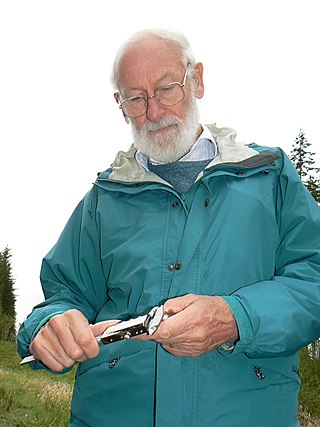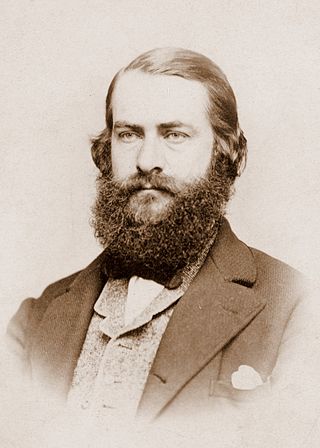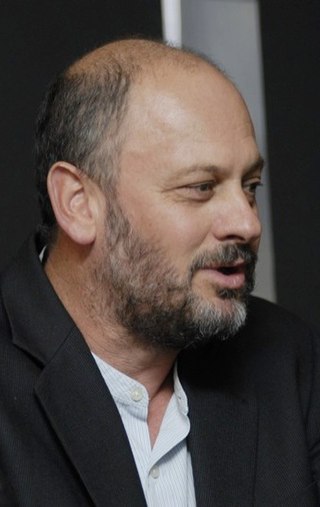Related Research Articles

Drexel University is a private space-grant research university with its main campus in Philadelphia, Pennsylvania. Drexel's undergraduate school was founded in 1891 by Anthony J. Drexel, a financier and philanthropist. Founded as Drexel Institute of Art, Science and Industry, it was renamed Drexel Institute of Technology in 1936, before assuming its current name in 1970. As of 2020, more than 24,000 students were enrolled in over 70 undergraduate programs and more than 100 master's, doctoral, and professional programs at the university.

Peter Raymond Grant and Barbara Rosemary Grant are a British married couple who are evolutionary biologists at Princeton University. Each currently holds the position of emeritus professor. They are known for their work with Darwin's finches on Daphne Major, one of the Galápagos Islands. Since 1973, the Grants have spent six months of every year capturing, tagging, and taking blood samples from finches on the island. They have worked to show that natural selection can be seen within a single lifetime, or even within a couple of years. Charles Darwin originally thought that natural selection was a long, drawn out process but the Grants have shown that these changes in populations can happen very quickly.

The Academy of Natural Sciences of Drexel University, formerly the Academy of Natural Sciences of Philadelphia, is the oldest natural science research institution and museum in the Americas. It was founded in 1812, by many of the leading naturalists of the young American republic with an expressed mission of "the encouragement and cultivation of the sciences". It has sponsored expeditions, conducted original environmental and systematics research, and amassed natural history collections containing more than 17 million specimens. The Academy also organizes public exhibits and educational programs for both schools and the general public.

Joseph Mellick Leidy was an American paleontologist, parasitologist and anatomist.

Gerrit Smith Miller Jr., was an American zoologist and botanist.

Timothy Fridtjof Flannery is an Australian mammalogist, palaeontologist, environmentalist, conservationist, explorer, author, science communicator, activist and public scientist. He was awarded Australian of the Year in 2007 for his work and advocacy on environmental issues. He is the Geneva Graduate Institute’s Fondation Segré Distinguished Visiting Professor.

Herbert Spencer Jennings was an American zoologist, geneticist, and eugenicist. His research helped demonstrate the link between physical and chemical stimulation and automatic responses in lower orders of animals.

Merritt Lyndon Fernald was an American botanist. He was a respected scholar of the taxonomy and phytogeography of the vascular plant flora of temperate eastern North America. During his career, Fernald published more than 850 scientific papers and wrote and edited the seventh and eighth editions of Gray's Manual of Botany. Fernald coauthored the book Edible Wild Plants of Eastern North America in 1919–1920 with Alfred Kinsey, which was published in 1943.
David Burton Wake was an American herpetologist. He was professor of integrative biology and Director and curator of herpetology of the Museum of Vertebrate Zoology at the University of California, Berkeley. Wake is known for his work on the biology and evolution of salamanders as well as general issues of vertebrate evolutionary biology. He has served as president of the Society for the Study of Evolution, the American Society of Naturalists, and American Society of Zoologists. He was a member of the American Association for the Advancement of Science, the Linnean Society of London, the American Academy of Arts and Sciences, the American Philosophical Society, and in 1998 was elected into the National Academy of Sciences. He was awarded the 2006 Leidy Award from the Academy of Natural Sciences of Philadelphia.
Hampton Lawrence Carson was an eminent American biologist best known for his work on the chromosomes of new species of the fruit fly Drosophila and his contributions to our understanding of their evolution.

Robert Evans Snodgrass was an American entomologist and artist who made important contributions to the fields of arthropod morphology, anatomy, evolution, and metamorphosis.

The Hadrosaurus foulkii Leidy Site is a historic paleontological site in Haddonfield, Camden County, New Jersey. Now set in state-owned parkland, it is where the first relatively complete set of dinosaur bones were discovered in 1838, and then fully excavated by William Parker Foulke in 1858. The dinosaur was later named Hadrosaurus foulkii by Joseph Leidy. The site, designated a National Historic Landmark in 1994, is now a small park known as "Hadrosaurus Park" and is accessed at the eastern end of Maple Avenue in northern Haddonfield.
Chancey Juday together with G. Evelyn Hutchinson, and his close collaborator, Edward A. Birge were pioneers of North American limnology. Birge and Juday founded an influential school of limnology on Lake Mendota at the University of Wisconsin. Edward Birge hired Chancey Juday through this program to help him take samples of lakes in Wisconsin. Their main sampling took place on Lake Mendota. The two, Juday and Birge, studied dissolved oxygen and temperature, leading future limnologists to a better understanding of stratification.

Herbert Friedmann was an American ornithologist. He worked at the Smithsonian Institution for more than 30 years. In 1929 he became a fellow of the American Ornithologists' Union (AOU) and served as the President of the AOU from 1937 to 1939. He published 17 books and was noted for study of Avian brood parasites.
Daniel Otte is a South African-American ecologist, entomologist, world expert on crickets and grasshoppers and prominent scientific illustrator. He has made significant contributions to evolutionary biology. He is curator and chairman of the Department of Entomology at the Academy of Natural Sciences in Philadelphia.
Edwin Linton was an American biologist noted for his research in the field of helminthology, the study of worms, especially parasitic worms in fishes. Linton was Research Fellow in Biology at University of Pennsylvania and professor emeritus at Washington and Jefferson College. The New York Times called Linton "one of the world's leading authorities on helminthology". Linton received his doctorate from Yale University. He was awarded the 1937 Leidy Award from the Academy of Natural Sciences of Philadelphia.
The Hayden Memorial Geological Award is presented by the Academy of Natural Sciences of Drexel University, Philadelphia, Pennsylvania, USA. It was named after US geologist Ferdinand Vandeveer Hayden. The award was established in 1888 and first awarded in 1890.
References
- 1 2 3 4 5 6 7 8 9 10 11 12 13 14 15 16 17 18 19 20 21 22 23 24 "The Four Awards Bestowed by The Academy of Natural Sciences and Their Recipients". Proceedings of the Academy of Natural Sciences of Philadelphia. 156 (1). The Academy of Natural Sciences of Philadelphia: 403–404. June 2007. doi:10.1635/0097-3157(2007)156[403:TFABBT]2.0.CO;2.
- ↑ Avril, Tom (December 22, 2009). "A big man in the world of insects Entomologist has identified 1,500 species". The Philadelphia Inquirer. Philadelphia. Archived from the original on April 15, 2015. Retrieved 15 April 2015.
- ↑ Mitchell, Peter (November 3, 2010). "Flannery wins Joseph Leidy Award". The Sydney Morning Herald. Sydney. Retrieved 15 April 2015.
- ↑ "Joseph Leidy Award for Stony Brook Biologist". The Academy of Natural Sciences of Drexel University. September 13, 2012. Retrieved 15 April 2015.